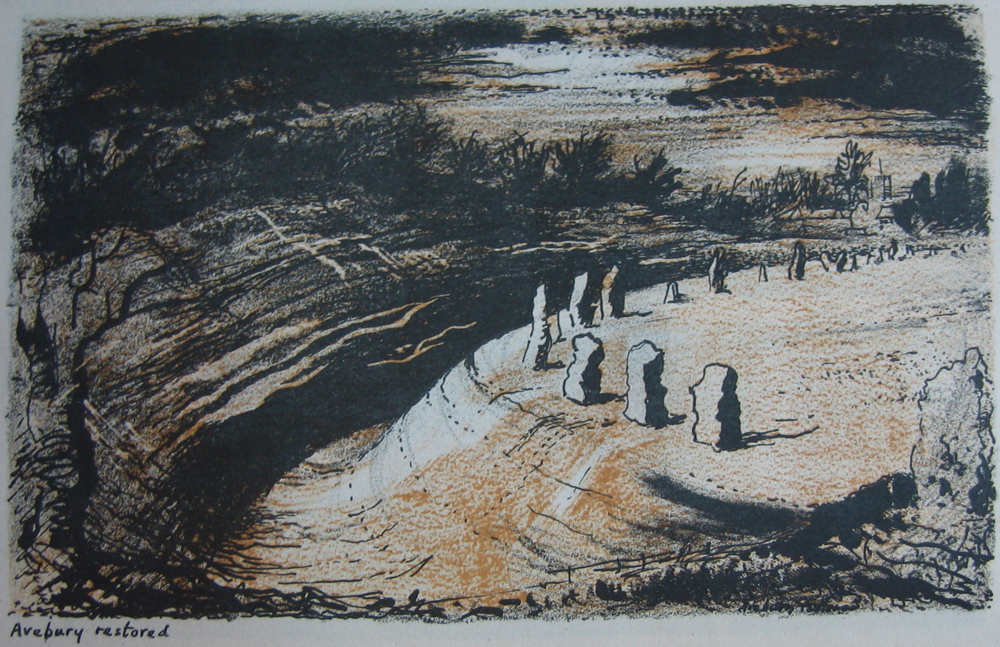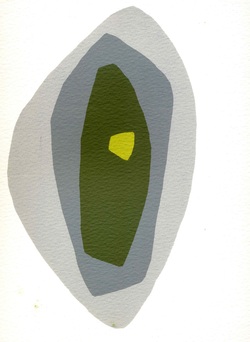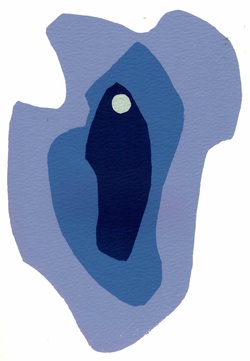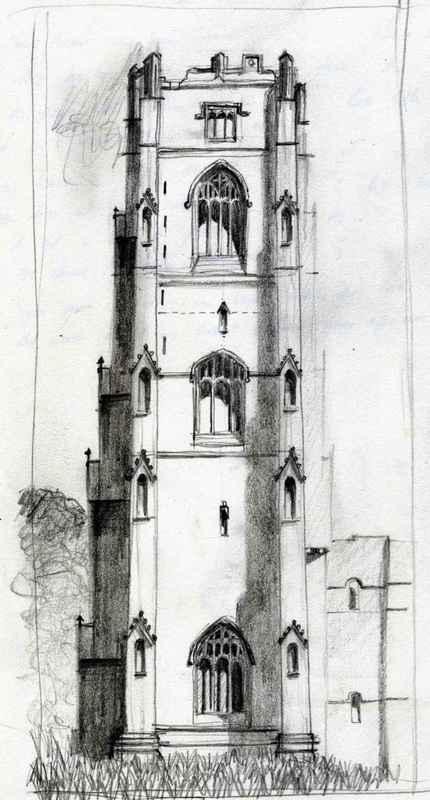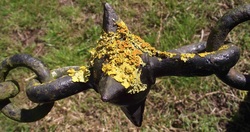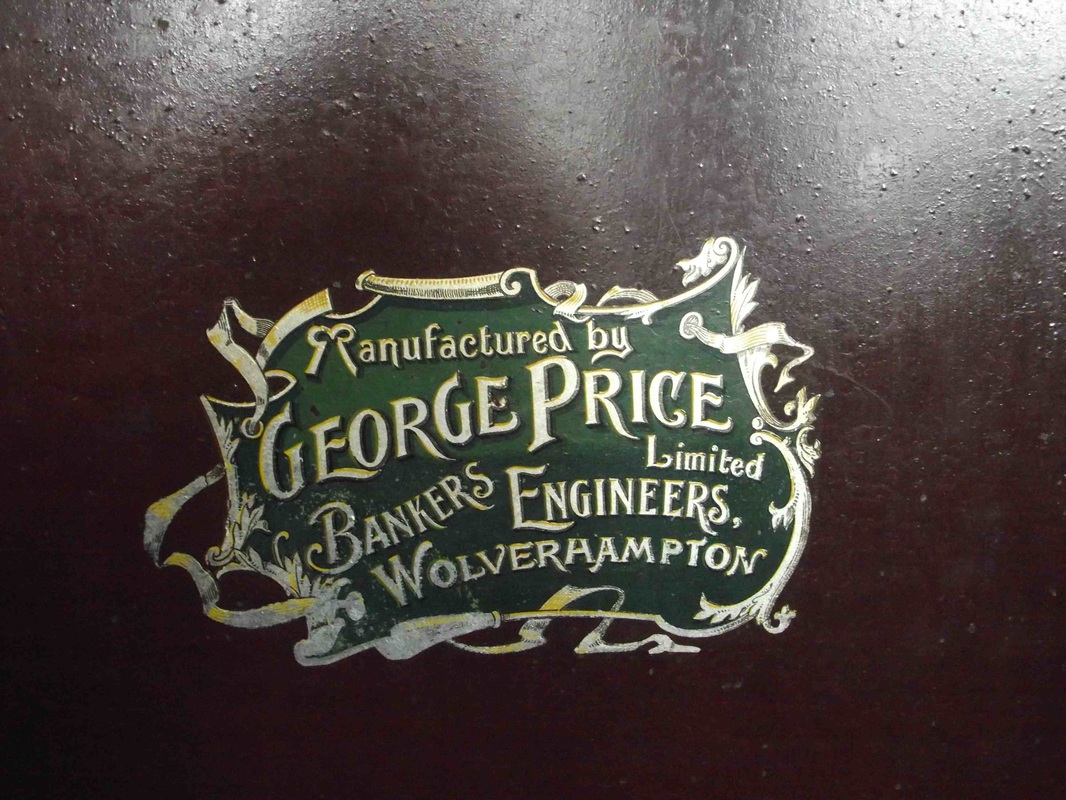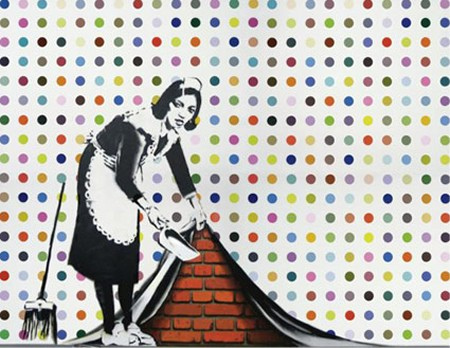|
I first came to Avebury in 1965 on a school trip. Although I can’t say my time at Slough Grammar School comprised the happiest days of my life, my alma mater was very good at showing us places that mattered. I remember the feeling of the place was magical, like sunshine after rain, and I felt, in a way that I have come to feel in other special places, that I belonged there. Avebury is a vast stone cirlce containing two small stone circles enclosed by a huge circular bank and ditch. Across the neighbouring fields the remains of stone avenues lead toward the centre. On the neighbouring hills evidence exists of other stone circles. This is often interpreted as a ritual landscape designed for a specific function: to be the stage for a coming-of-age ceremony for our ancestors. (To read more about this I recommend The Avebury Circle by Michael Dames. To order CLICK HERE) The most extraordinary thing about Avebury is that in the middle of all this is a village – a village with a guilty past. Most of the stones survived well into the seventeenth century until they were brought to academic attention by historian John Aubrey. William Stukeley made the first accurate survey of the stones in the mid-eighteenth century but had to observe his study being destroyed before his eyes as local villagers broke up most of the stones for building material. It seems unbelievable that such a great human achievement which had stood, untouched for 4,500 years was virtually obliterated in about twenty years. Three of my heroes, Paul Nash, John Piper and Barbara Hepworth were inspired by Avebury and the shapes of the stones went on to become recurring images in their work. I have really, really wanted to make a great painting of Avebury for many years and I have failed repeatedly. However recently I’ve got closer to my goal by taking a deliberate step away from reality by working in print. Screen printing forces you to take a simpler approach and the result has been that my stones are becoming more abstracted until I found I had pared everything back to what I loved about them – their incredibly beautiful shapes. Here are a few of the resulting images. Most of these were created for The Bluestone Gallery in Devizes, Wiltshire, which is very close to Avebury. To visit their very nice website CLICK HERE.  The Gallery in Masham, North Yorkshire which is the main outlet for my work, has a lovely new website. To pay a visit CLICK HERE. 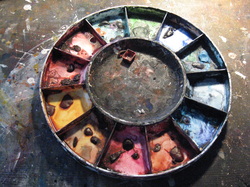 There are still some places on the course I'm teaching at Artison about A Contemporary Approach to Watercolour. Friday 18th May 10 am - 4 pm Watercolour frequently suffers from an undeserved reputation as a pale, washed out medium. Contemporary watercolour artists, however, are exploring vibrant new ways of creating results rich in colour and texture and this course looks at some easy ways to take these ideas into your work. To book a place CLICK HERE  To visit my Facebook page CLICK HERE. You can also sign up for my monthly newsletter from this page, full of information about art history, exhibitions, art courses and book reviews.
0 Comments
My interest in the details goes back a long way. I can remember when I was very small losing myself in the patterns on my Aunt Belle’s china, looking at the cast iron coal hole covers on the pavement, following the swirls in the paisley carpet designs. Along with the smell of damp and the dust motes floating in the air the things I remember best from the long hours in church were the carvings on the medieval screen, the worn encaustic tiles on the chancel floor and the graffiti bitten deep into the choir stalls by previous generations of the bored. Of the interminable sermons not a word ever stayed with me. I spend a lot of time drawing and painting buildings. I usually start by getting to know the silhouette but it’s the details that draw me in. Looking back through my photo files I’m amazed by how many times I seem to click the shutter on something small, but amazing. Here is just a small selection.  The next art course I'm teaching at Artison is: A Contemporary Approach to Watercolour Friday, 18th May 2012 Price: £65.00 Watercolour frequently suffers from an undeserved reputation as a pale, washed out medium. Contemporary watercolour artists, however, are exploring vibrant new ways of creating results rich in colour and texture and this course looks at some easy ways to take these ideas into your work. By the end of the course will be able to: - Mix and use watercolour in a variety of ways - Incorporate different media for different effects - Plan paintings which move away from traditional styles - Develop an awareness of directions in contemporary watercolour To book CLICK HERE  Fountains Abbey, Late Evening Watercolour Framed Size: 28" x 21" Currently on sale at The Gallery, Masham To enquire about this painting CLICK HERE To visit the NEW Gallery website CLICK HERE “The world's an ugly place; you need to brighten it up whenever you can.” Damien Hirst Damien Hirst left Goldsmith’s College in London in 1989 with a clear-eyed vision of his future. He had a list of the people he needed to court, a strong sense of his own identity ( a Mockney accent and a penchant for wearing black and white) and a few reheated ideas from the likes of Duchamp and Warhol. Now, with his enormous exhibition currently at Tate Modern we can all see how it's turned out. I think one description of Hirst which is highly relevant is “the artist we deserve”. He is the artist of the Ikea generation, the credit bubble, the age of celebrity – his work is quick, slick, sometimes beautiful and available in virtually every size and colour. Like Andy Warhol he embraced a “factory” approach – the endless spot paintings, for example, churned out by teams of painters and then by digital print - but, unlike Warhol, had little or no involvement in the final work. A signed, mechanically printed, reproduction of one of these extremely arms-length masterpieces can be yours for £20,000. (That’s right – a piece of paper which has been run through a computer printer of an image Damien didn’t paint will cost you twenty grand). And there it is: the point every conversation about him arrives at - Hirst equals money. But is that all? I don't think so. Nearly every idea Hirst has put before us has some merit: facing a shark head on is to go some way towards imagining your own death, the soothing colours of sleeping pills in a medicine cabinet invokes the lethal attraction of endless sleep, a hypnotic mandala of butterfly wings leaves you stunned by the glory of nature. But. for me at least, once the first thrill is gone there is just the dull emptiness of repetition and the distant ringing of a till.
I would certainly advise anyone who wants to see a terrific lesson in the history of modern art to go Tate Modern and see Hirst’s artistic life on show. Its on till September and you may be moved in ways you don’t expect. Most artists want to make a living out of our art but most of us are driven by the urge, the joy, the obsession of creativity - by the constant refrain that there is more to say and a better way to say it. I feel, however, that all poor old Damien has driving him onward these days is the empty thrill of a full wallet. Damien Hirst's Solo Exhibition is at Tate Modern, Bankside, London from 4 April 2012 – 9 September 2012 I began painting buildings a very long time ago. I’m fascinated by how everything fits together, how the shapes and surfaces reflect the light and create the shadows and how the silhouette works against the sky.  Durham Cathedral from Western Hill, Watercolour I fell in love with Durham Cathedral the minute I saw it from the train that was taking me to my interview for Neville’s Cross College in early 1973. Passing over Durham viaduct the city was suddenly revealed – houses, churches and trees crowned by a castle and an iconic cathedral. John Ruskin, the great Victorian critic, called the view from Durham Station the eighth wonder of the world – and this from a chap whose house overlooked one of the best views in the Lake District. Some of the very first paintings I ever made were of this building for the simple reason that they were painted for the Cathedral bookshop. I lived in several places in Durham - Neville’s Cross, Potter’s Bank, Crossgate, Gilesgate – and from each point found that the cathedral reveals a different character. Durham is unusual for being a complete Norman cathedral – a tour de force of dogtooth arches, barrel vaulting and round-headed windows – where most British cathedrals are a collection of building styles depending on whatever look was fashionable when some money was available. Durham was built to house the shrine of St. Cuthbert, whose much-travelled coffin rooted itself to the ground here. The monks who had been carrying Lindisfarne’s premiere saint around for 120 years (on and off) were probably glad to finally put the coffin in the ground and he still lies at the heart of the building. I get a lump in the throat and a tear in the eye whenever I go back and I must have painted the great church dozens of times but I still find things about it that make me pick up my brush again. In Notes from a Small Island Bill Bryson says: “If you have never been to Durham, go there at once. Take my car. It's wonderful.” I couldn’t put it better. The paintings shown are all available from The Gallery, Masham. CLICK HERE for details Artison are currently taking bookings for my painting course:
A Contemporary Approach to Watercolour on Friday 18th May. For details and to book CLICK HERE |
Archives
June 2024
|


